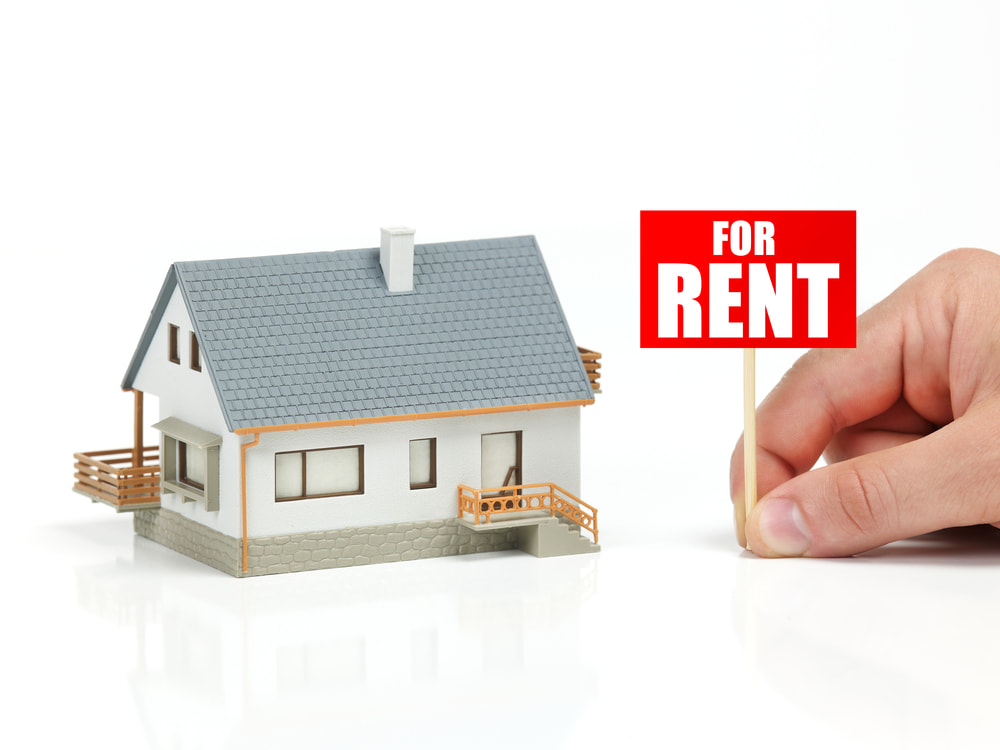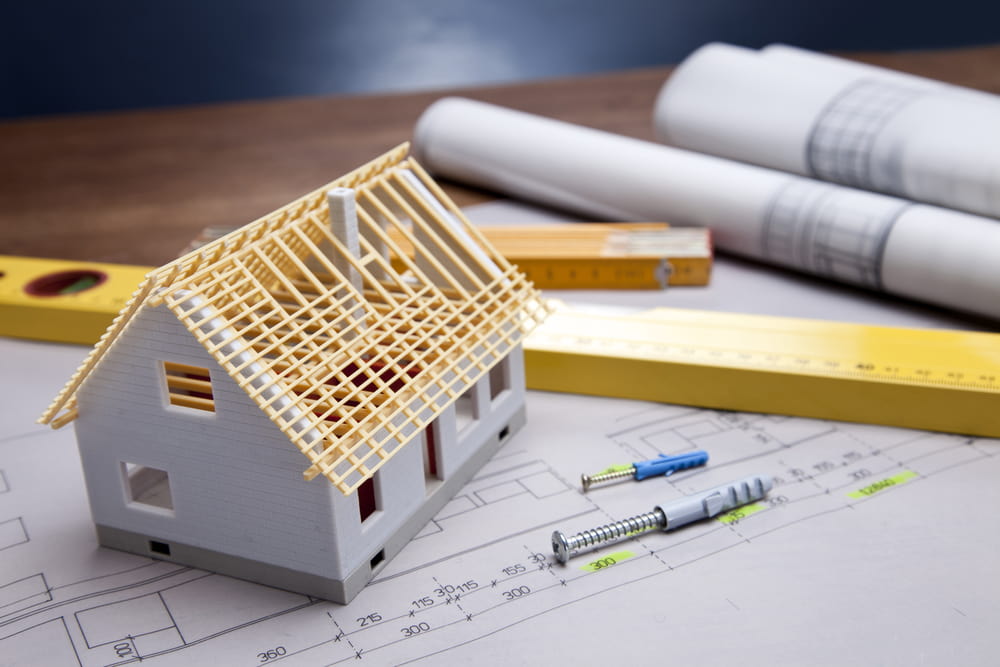The number of US renters has been steadily rising since the housing market crash of 2007. Thanks to student debt and lagging incomes, many millennials still prefer renting to owning a home. At the same time, those millennials are getting older and starting families of their own.
This has opened a new opportunity in the real estate market: build-to-rent homes. These are single-family homes that are built from the ground up to rent them out.
If you’re a real estate investor, you might be interested in building a build-to-rent house of your own or investing in a build-to-rent company. If you’re a tenant, you might be looking to rent a build-to-rent home. Either way, we’re here to explain all the basics.
[ Thinking about investing in real estate? Register to attend a FREE online real estate class and learn how to get started investing in real estate. ]
What Is Build-To-Rent?
Build-to-rent homes are single-family homes that are built with the specific intention of renting them. This distinguishes them from a renovation or a rehab, often a single building in an existing neighborhood.
Instead, most build-to-rent homes are constructed as an entire complex, similar to a gated neighborhood. They often have a community pool, playground, dog park, and other amenities. These amenities are managed by the property owner, not by an HOA, which simplifies the expense process for residents.
Because of the significant upfront investment, build-to-rent houses are normally built by real estate companies, not by individual people. That said, there are plenty of ways for individual investors to invest in build-to-rent developments.

What Is A Build-To-Rent Home?
Broadly speaking, building a rental property is nothing new. People have been building large, multi-family apartment buildings for as long as people have been living in cities. Duplexes, triplexes, and other buildings are also as old as the hills.
In the past, most single-family rentals were not originally built as rentals. Somebody owned them, and the property got turned into a rental at some point. These houses would coexist with other single-family homes in an urban or suburban neighborhood. A modern build-to-rent neighborhood is built to be rented from the very beginning. As a result, all of the neighbors are renting.
What Is Driving The Demand For Build-to-Rent Homes?
Even as millennials build their careers and earn more income, many are still paying a substantial portion of their paycheck in student loans. This makes it hard to save up the traditional 6% down payment on a house that costs $300,000 or more. As a result, most young adults are continuing to rent their homes.
At the same time, these millennials want a home with more features, safety, and a sense of community. In a build-to-rent home, you have access to neighborhood amenities like a gym, swimming pool, and other community spaces. Here are some of the other drivers of build-to-rent’s growth.
Shifts In Demographics
Younger people have traditionally made up the majority of all renters. As a young person, you moved out of your parents’ house, and into an apartment, usually in an urban area. By the time you started a family, you’d saved up enough money to move out to the suburbs.
But nowadays, housing prices are higher than ever, which makes it hard to save up. Combine that with crippling levels of student loan debt, and it makes sense that renters are getting older and older. These are people with more money to spent on rent, who want an authentic suburban experience.
Financing Availability
Another major driver of build-to-rent growth is the ready availability of capital. Affordable financing is available through federal agencies like Fannie Mae, which invests billions of dollars a year in new housing.
Of course, access to financing is just one part of the equation; you also want to see a return on your investment. The ROI on a single-family home is actually higher than the ROI on an apartment with the same number of bedrooms. This is thanks in large part to the fact that tenants are willing to pay significantly higher rent for a house with a yard, garage, and storage space.
Exit Strategies
Real estate investments are notoriously illiquid. For example, if you own an office building, it can find years to find a buyer. That’s because the only potential buyers will be people who want to buy commercial real estate. If there’s no demand for office space, you’ll have a hard time selling at any price.
Single-family homes, on the other hand, are relatively easy to sell. If you don’t want to sell the entire neighborhood, you can sell individual homes to existing tenants, or put them on the market for new buyers. Alternatively, you could sell the entire development to a large company that wants to continue renting the houses out. The point is, you have multiple exit strategies.
The Single-Family Build-To-Rent Market Is Expanding
Until very recently, the bulk of the rental market has been located in urban areas. These areas were particularly favored by young people who wanted to live close to work.
But many people are now working from home. Companies have realized that their employees remain effective at home and can save money by renting less office space. This, along with changing demographics, has led to a surge of demand for single-family rentals.

Should You Invest In Build To Rent Homes?
With housing prices continuing to rise, it’s getting more expensive to buy existing single-family homes. This makes them less and less attractive from an investment perspective, since it will take longer to earn back your investment.
Construction costs for new housing, on the other hand, have remained relatively stable. This makes build-to-rent a more attractive option, since you’re looking at a superior ROI. Then again, there are some downsides as well. Here are some of the pros and cons.
Benefits Of Building To Rent
-
You can get federal loans. These come with substantially lower interest rates than private loans, so your payments will be lower.
-
You can expect more long-term tenants. A lot of apartment renters are temporary, and move out after one or two years. This leads to a lot of turnover and possible vacancies. On the other hand, single-family homes appeal to tenants who intend to live there for years.
-
You can charge more in rent. Rental rates for single-family homes are growing almost 50% faster than rates for multi-family buildings. You can also charge a lot more for the same number of bedrooms.
-
You can choose your own location. If you’re flipping homes, you have to look for foreclosures and tax auctions, which limits which properties you can rent out. When you build to rent, you can build a brand new development.
-
You don’t have to bid for properties. Another downside of flipping houses is that you have a lot of competition. When you’re building to own, all you need is an empty lot.
Disadvantages Of Building To Rent
-
Your competitors are mega-corporations. When you’re renting out existing homes, most of your competitors are individual landlords like you. On the other hand, most build-to-rent developments are built by large companies. These companies can take advantage of bulk discounts that aren’t available to an individual.
-
Your geographic opportunities are limited. For build-to-rent real estate to provide a good ROI, the homes should be low- to medium-priced, and they should be built on inexpensive land. If you’re in an area with high real estate costs, you’re not going to get a good ROI.
-
The ROI isn’t as high as house flipping. You might have to bid for a run-down property, and you might not always be buying in the neighborhood you want. But your initial outlay is typically low, so you earn your investment back faster.
Should You Rent A Build-To-Rent Property?
So far, we’ve talked a lot about build-to-rent homes from the perspective of an investor or landlord. But how do they look from the perspective of a prospective tenant? Here are some of the benefits and drawbacks.
Benefits Of Living In A Build-To-Rent Property
-
You get lots of amenities. Most build-to-rent communities come with swimming pools and other luxury features. You won’t get these in most neighborhoods, or in all but the priciest apartments.
-
You don’t have to do your own maintenance. Unlike owning your home, you don’t have to perform any major repairs. If the roof starts leaking, you just call your property manager.
-
You get a sense of community. With lots of community space, there are plenty of places for you to get to know your neighbors.
Disadvantages Of Living In A Build-To-Rent Property
-
Renting costs more over time. When you buy a house, it’s an investment that you will eventually own once your mortgage is paid off. When you rent a house, all you get is the temporary right to live there.
-
Renting a house costs more than an apartment. Not only that, but costs will go up over time.
You can’t modify your house. Since you don’t own it, you don’t get to choose the paint color, install new flooring, or build a new deck. -
Build-to-rent properties are usually small. They also tend to be cookie-cutter models, so you won’t get any of the charming quirks of many pre-built homes.
4 Ways To Invest In Build-To-Rent Homes
We’ve already discussed how most build-to-rent developments are built by major companies. How do you get in on the game as an individual investor? Here are a few ways.
Residential Real Estate Investment Trust (REITs)
By investing in a publicly-traded REIT, you can earn money on all of their properties. That said, different REITs have different specializations. Make sure to do your research, and invest in an REIT with build-to-rent properties.
Publicly Traded Institutional Owner/Builder
By investing in a publicly-traded property developer, you can perform better due diligence than you can on a REIT with thousands of smaller holdings. If that’s more your speed, there are plenty of good options, like Meritage and Lennar.
Crowdfunding Platforms
If you’d rather not invest in a REIT or a publicly-traded company, you can always raise your own money. On a crowdfunding site like CrowdStreet, you can garner your investors, and build your development from scratch. Just keep in mind that you’ll need to have your own business plan, which requires a lot of legwork.
BTR Loans & Associated Tax Credits
If you already have a large amount of seed money, you could obtain build-to-rent financing from a bank. This works a lot like a construction loan, but comes with the requirement that you rent the property for a minimum amount of time before you’re allowed to sell it. You might also be able to take advantage of the LIHTC tax credit program if you’re renting a minimum number of units to low-income tenants.
Summary
Today’s economy presents rich opportunity for investors in build-to-rent housing. Whether you’re investing in a REIT or raising your own capital, build-to-rent homes can form a valuable part of your portfolio. Build-to-rent houses also have a lot to offer prospective tenants, from creature comforts to a welcoming neighborhood environment.
Ready to start taking advantage of the current opportunities in the real estate market?
Click the banner below to take a 90-minute online training class and get started learning how to invest in today’s real estate market!

